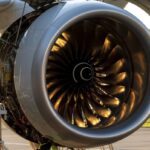
The Boeing 757 earned the nickname “the last of the muscle jets” for a few key reasons, particularly related to its design, power, and role in the evolution of commercial aviation.
Powerful Engines
The 757 is known for being equipped with some of the most powerful engines in its class. It uses either the Rolls-Royce RB211 or the Pratt & Whitney PW2000 engines, which give it a higher thrust-to-weight ratio compared to many of its contemporaries. This allowed the 757 to perform exceptionally well, particularly in terms of takeoff performance and range, making it a “muscle jet” in terms of raw power.
Size and Performance
The 757 was designed to bridge the gap between narrow-body aircraft (like the 737) and larger wide-body jets (like the 767). It could carry more passengers and fly longer distances than smaller jets, yet it was still relatively efficient. Its combination of range (up to 4,000 miles) and high thrust gave it the ability to serve a variety of roles, including transatlantic flights and high-density short-haul routes. This versatility made it a favorite for airlines but also contributed to its “muscle” image.
Last of Its Kind in the “Muscle” Era
When the 757 was developed in the 1980s, it represented a high point in jet design, where powerful, efficient engines were a key component of aircraft performance. After the 757, the trend in aircraft design began to shift more toward fuel efficiency and quieter, more environmentally friendly designs, often with engines that prioritized lower fuel consumption and less thrust for specific routes. The “muscle” jet era — when raw engine power was a central feature of aircraft design — faded out, especially with the introduction of more fuel-efficient, quieter, and less powerful models like the Boeing 787 and Airbus A320neo.

Era of High-Performance Aircraft
The 757 was also among the last of the “high-performance” narrow-body jets before a shift to more specialized, efficient aircraft. Its design, which emphasized speed and power, was more typical of older jets like the 727, and it was one of the final models in its class to really push those limits.
So, in essence, calling the 757 the “last of the muscle jets” is a reflection of its combination of powerful engines, high performance, and the fact that it marked the end of an era where commercial aviation focused on raw performance over fuel efficiency and quieter operations.
By – Aeropeep Team
- ✈️ Airbus A350 vs Boeing 777: A Deep Technical Comparison
- 10 Best Aviation Gifts in 2025 That Every Pilot & AvGeek Will Love
- Air India Flight AI171 Crash: Latest Updates on Cause, Investigation & Victim Support
- 🛑 Tragedy in the Skies: Air India Flight AI171 Crash – Full Update as of June 14, 2025
- “Traffic saved me”Student missed Air India flight by just 10 minutes





